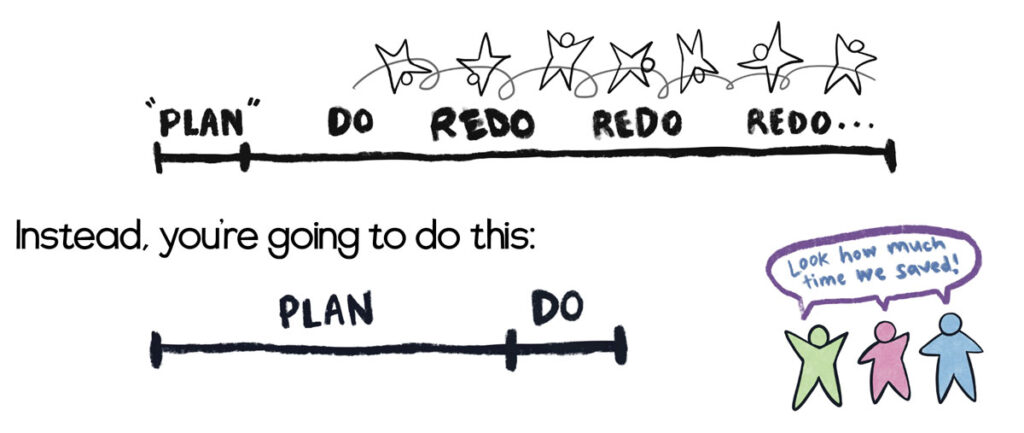Creating Problem Statements
Crafting a problem statement for each paradox requires us to outline and define the issues, the root causes, and the impact the problem is having on people, processes, and overall results.
To deeply understand and solve a paradox, you need to understand the root cause of the issue.
Defining the problem.
Ever noticed that certain issues never seem to get resolved or keep resurfacing over and over again? The complexity of these issues can cause inaction, frustration, and even divisions among team members.

Many times teams jump into action and address the symptoms without exploring the root causes. They scratch the persistent itch without understanding what is causing the itch . . .
Prior to taking action, planning is required to ensure you are solving the correct problem. Then you will not have to rework the solution.
The following process helps to leverage different team member points of view. Overall it saves an immense amount of time, conflict, and headaches. It also increases the likelihood of success solving the right problem the first time.
Most teams do the following:

How do you create a great problem statement?
Start by . . .
Asking each other the following questions with no blame, judgment, or accusations:
- How do you each see the problem we are trying to address?
- What are the relationships and/or intersections of these components?
- What might be causing this issue?
Think of each person’s view as a precious treasure . . . to be openly held, observed, and understood. Just open up, and deeply listen.
What are the biggest areas of friction?
Name the dynamics and implications as an observer. By investing just a bit of time here you can save hours, days, or weeks later on . . .
Pro Tip: Be careful that you don’t mistake hidden solutions for problems.
Watch out for statements that include the following phrases:
- Less than . . .
- Lack of . . .
- If we had better . . .
- More of . . .
- Improve . . .
If you are using these words, go deeper to uncover why are you using them.
Example to improve a problem statement:
Before
Negative feedback is focused on orders slowing down and poor communication. We lack a fulfillment process and have communication gaps. We should prioritize improving the customer experience, but the cause needs pinpointing.
After
Customer satisfaction scores related to order fulfillment have dipped by 10% in the past quarter, with customers specifically reporting delays in shipping and difficulty tracking orders.
Continue to ask yourself, “What do we need to solve for?” The goal is to understand why problems are problems . . .
Consider using the “5 Whys” Method
This will help you explore both the breadth and depth of an issue. The “5 Whys” is a technique that will help you discover the core cause of a problem. Evaluate a problem and ask “Why did this happen?” When you answer that, ask “Why” again. Continue doing this, at least five times, to uncover the themes that keep surfacing.
This process will help to surface multiple dimensions. By the time you are done you should have a few paragraphs giving insight to the root cause.
Activity | Group Brainstorm
Overview:
Use the techniques outlined above to discover the core cause of a problem and generate a problem statement for the team.
1-hour activity
Objectives:
- For each of the top paradoxes, agree on the problems we need to plan to address
- What are we trying to solve for?
- Why? For what purpose? What is the impact we want by addressing this?
- Add any other strategic themes that may be missing that must be incorporated into our strategic game plan for us to achieve our purpose and be successful
- Prioritize – where does our focus need to be?
Facilitation Questions:
- How do you each see the problem we are trying to address?
- What are the relationships and/or intersections of these components?
- What might be causing this issue?
Great News!
The process of drafting a well-crafted problem statement generates ideas for both the longer-term desired results as well as milestones to achieve them. Which is our next step . . .
